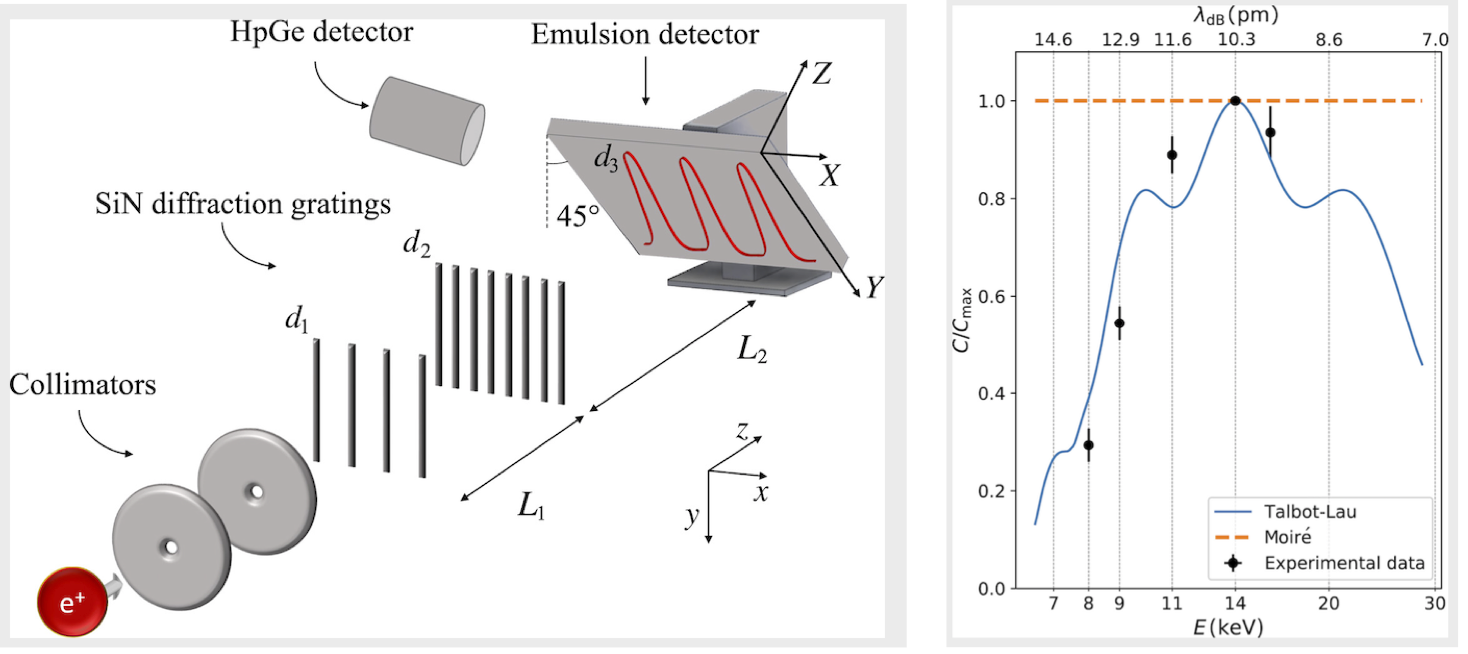
(Left) Schemtic view of the apparatus. (Right) Measured interference visibility compared with quantum (blue) and classical (orange) predictions
The inclusion of Antimatter Interferometry among the Top-10 Breakthrough Experiments of 2019 selected by the journal Physics World rewards the work of the QUPLAS group, culminating in its recent publication in Science Advances [1]. QUPLAS (Quantum interferometry and gravitation with Positrons and LASers) is a collaboration between the Politecnico di Milano, the INFN Milan Unit, the University of Milan and the Albert Einstein Center (AEC ) and Laboratory for High Energy Physics (LHEP) of the University of Bern.
This experiment is the antimatter version of the interference experiment from a double slit performed with single particles which was proposed as a thought experiment by Einstein in 1927 and was considered by Feynman in his lectures as the essence of the "mystery" of Quantum Physics. The experiment, which Feynman considered unattainable, was performed with electrons by the Bologna group of Merli, Missiroli and Pozzi in 1976, and judged to be "the most beautiful experiment in physics" by Physics World. The QUPLAS researchers have now achieved the same effect for the first time with an antimatter particle: the positron (anti-electron). The existence of antimatter was predicted following the synthesis of Special Relativity and Quantum Mechanics resulting in the Dirac equation, and was first observed in 1932. Antimatter constitutes a small fraction of the observable Universe, and its absence is one of the most important mysteries and unresolved problems of contemporary physics.
In the QUPLAS experiment the positron beam of the L-NESS laboratory of the Politecnico di Milano (Como campus) was used, at an energy between 8 and 18 keV. The interferometer used for the experience worked in Talbot-Lau mode, producing an interference pattern on the high-resolution nuclear emulsion detector. The positron flow in the apparatus was such as to guarantee, at each instant, the presence of a single antiparticle in the interferometer. In this way it was possible to demonstrate for the first time the interference of a single anti-particle. The spokesman of the QUPLAS experiment is Marco Giammarchi, who belongs to INFN Milano Unit, and holds the course in Particle Physics at the University of Milan.
[1] S. Sala, A. Ariga, A. Ereditato, R. Ferragut, M. Giammarchi, M. Leone, C. Pistillo, P. Scampoli, Science Advances 2019, 5 eaav7610.








 Subscribe to RSS Feed
Subscribe to RSS Feed